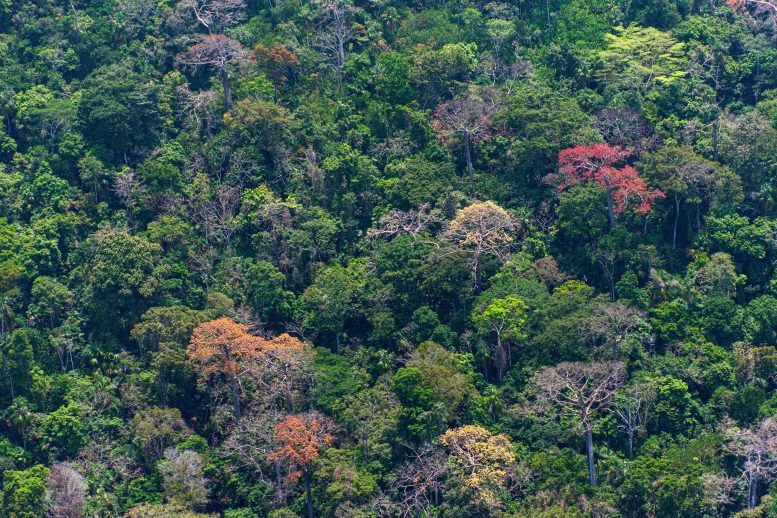
An aerial view of a tropical forest along the eastern Pacific Ocean shoreline of Barro Colorado Island, Panama. Credit: Smithsonian Tropical Research Institute
All living things have tipping points: points of no return, beyond which they cannot thrive. A new report in Science shows that maximum daily temperatures above 32.2 degrees Celsius (about 90 degrees Fahrenheit) cause tropical forests to lose stored carbon more quickly. To prevent this escape of carbon into the atmosphere, the authors, including three scientists affiliated with the Smithsonian Tropical Research Institute (STRI) in Panama, recommend immediate steps to conserve tropical forests and stabilize the climate.
Carbon dioxide is an important greenhouse gas, released as fossil fuels are burned. It is absorbed by trees as they grow and stored as wood. When trees get too hot and dry, they may close the pores in their leaves to save water, but that also prevents them from taking in more carbon. And when trees die, they release stored carbon back into the atmosphere.
Tropical forests hold about 40% of all the carbon stored by land plants. For this study, researchers measured the ability of tropical forests in different sites to store carbon.
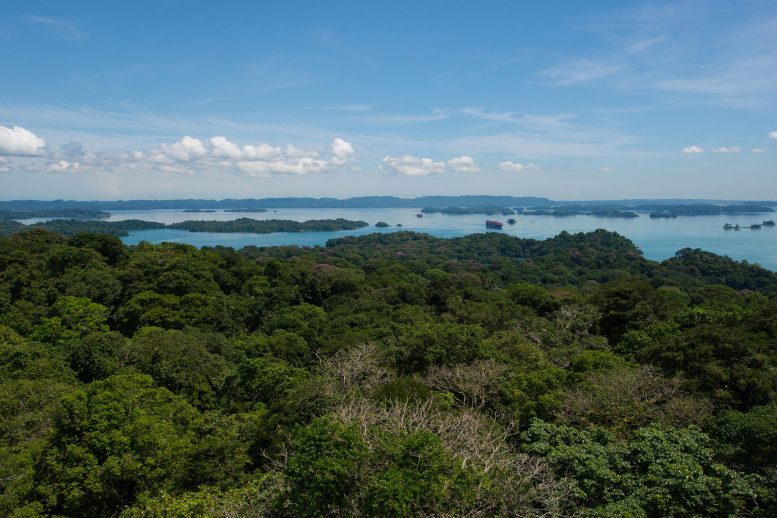
An aerial view of a tropical forest on the eastern Pacific Ocean shoreline of Barro Colorado Island, Panama. Credit: Smithsonian Tropical Research Institute
“Tropical forests grow across a wide range of climate conditions,” said Stuart Davies, director of the Smithsonian’s Forest Global Earth Observatories (ForestGEO), a worldwide network of 70 forest study sites in 27 countries. “By examining forests across the tropics, we can assess their resilience and responses to changes in global temperatures. Many other studies explored how individual forests respond to short-term climatic fluctuations. This study takes a novel approach by exploring the implications of thermal conditions currently experienced by all tropical forests.”
By comparing carbon storage in trees at almost 600 sites around the world that are part of several different forest monitoring initiatives: RAINFOR, AfriTRON, T-FORCES, and ForestGEO, the huge research team led by Martin Sullivan from the University of Leeds and Manchester Metropolitan University found major differences in the amount of carbon stored by tropical forests in South America, Africa, Asia and Australia. South American forests store less carbon than forests in the Old World, perhaps due to evolutionary differences in which tree species are growing there.
They also found that the two most important factors predicting how much carbon is lost by forests are the maximum daily temperature and the amount of precipitation during the driest times of the year.
As temperatures reach 32.2 degrees Celsius, carbon is released much faster. Trees can deal with increases in the minimum nighttime temperature (a global warming phenomenon observed at some sites), but not with increases in maximum daytime temperature.
They predict that South American forests will be the most affected by global warming because temperatures there are already higher than on other continents and the projections for future warming are also highest for this region. Increasing carbon in the atmosphere may counterbalance some of this loss, but would also exacerbate warming.
Forests can adapt to warming temperatures, but it takes time. Tree species that cannot take the heat die and are gradually replaced by more heat-tolerant species. But that may take several human generations.
“This study highlights the importance of protecting tropical forests and stabilizing the Earth’s climate,” said Jefferson Hall, co-author and director of the Smithsonian’s Agua Salud Project in Panama. “One important tool will be to find novel ways to restore degraded land, like planting tree species that help make tropical forests more resilient to the realities of the 21st century.”
The Agua Salud project asks how native tree species adapted to an area can be used to manage water, store carbon, and promote biodiversity conservation at a critical point where North and South America connect.
It is also noted that one of the first permanent tropical forest study sites in the world, located at STRI’s research station on Barro Colorado Island in Panama, is currently not being monitored for the first time in 40 years as a result of the COVID-19 pandemic, giving scientists less of a handle on any climate change effects that may be in play.
Steve Paton, director of STRI’s physical monitoring program, notes that in 2019 there were 32 days with maximum temperatures over 32 degrees Celsius at a weather station in the forest canopy on the island, and a first glance at his data indicates that these exceptionally hot days are becoming more common.
Reference: “Long-term thermal sensitivity of Earth’s tropical forests” by Martin J. P. Sullivan, Simon L. Lewis, Kofi Affum-Baffoe, Carolina Castilho, Flávia Costa, Aida Cuni Sanchez, Corneille E. N. Ewango, Wannes Hubau, Beatriz Marimon, Abel Monteagudo-Mendoza, Lan Qie, Bonaventure Sonké, Rodolfo Vasquez Martinez, Timothy R. Baker, Roel J. W. Brienen, Ted R. Feldpausch, David Galbraith, Manuel Gloor, Yadvinder Malhi, Shin-Ichiro Aiba, Miguel N. Alexiades, Everton C. Almeida, Edmar Almeida de Oliveira, Esteban Álvarez Dávila, Patricia Alvarez Loayza, Ana Andrade, Simone Aparecida Vieira, Luiz E. O. C. Aragão, Alejandro Araujo-Murakami, Eric J. M. M. Arets, Luzmila Arroyo, Peter Ashton, Gerardo Aymard C., Fabrício B. Baccaro, Lindsay F. Banin, Christopher Baraloto, Plínio Barbosa Camargo, Jos Barlow, Jorcely Barroso, Jean-François Bastin, Sarah A. Batterman, Hans Beeckman, Serge K. Begne, Amy C. Bennett, Erika Berenguer, Nicholas Berry, Lilian Blanc, Pascal Boeckx, Jan Bogaert, Damien Bonal, Frans Bongers, Matt Bradford, Francis Q. Brearley, Terry Brncic, Foster Brown, Benoit Burban, José Luís Camargo, Wendeson Castro, Carlos Céron, Sabina Cerruto Ribeiro, Victor Chama Moscoso, Jerôme Chave, Eric Chezeaux, Connie J. Clark, Fernanda Coelho de Souza, Murray Collins, James A. Comiskey, Fernando Cornejo Valverde, Massiel Corrales Medina, Lola da Costa, Martin Dancák, Greta C. Dargie, Stuart Davies, Nallaret Davila Cardozo, Thales de Haulleville, Marcelo Brilhante de Medeiros, Jhon del Aguila Pasquel, Géraldine Derroire, Anthony Di Fiore, Jean-Louis Doucet, Aurélie Dourdain, Vincent Droissant, Luisa Fernanda Duque, Romeo Ekoungoulou, Fernando Elias, Terry Erwin, Adriane Esquivel-Muelbert, Sophie Fauset, Joice Ferreira, Gerardo Flores Llampazo, Ernest Foli, Andrew Ford, Martin Gilpin, Jefferson S. Hall, Keith C. Hamer, Alan C. Hamilton, David J. Harris, Terese B. Hart, Radim Hédl, Bruno Herault, Rafael Herrera, Niro Higuchi, Annette Hladik, Eurídice Honorio Coronado, Isau Huamantupa-Chuquimaco, Walter Huaraca Huasco, Kathryn J. Jeffery, Eliana Jimenez-Rojas, Michelle Kalamandeen, Marie Noël Kamdem Djuikouo, Elizabeth Kearsley, Ricardo Keichi Umetsu, Lip Khoon Kho, Timothy Killeen, Kanehiro Kitayama, Bente Klitgaard, Alexander Koch, Nicolas Labrière, William Laurance, Susan Laurance, Miguel E. Leal, Aurora Levesley, Adriano J. N. Lima, Janvier Lisingo, Aline P. Lopes, Gabriela Lopez-Gonzalez, Tom Lovejoy, Jon C. Lovett, Richard Lowe, William E. Magnusson, Jagoba Malumbres-Olarte, Ângelo Gilberto Manzatto, Ben Hur Marimon Jr., Andrew R. Marshall, Toby Marthews, Simone Matias de Almeida Reis, Colin Maycock, Karina Melgaço, Casimiro Mendoza, Faizah Metali, Vianet Mihindou, William Milliken, Edward T. A. Mitchard, Paulo S. Morandi, Hannah L. Mossman, Laszlo Nagy, Henrique Nascimento, David Neill, Reuben Nilus, Percy Núñez Vargas, Walter Palacios, Nadir Pallqui Camacho, Julie Peacock, Colin Pendry, Maria Cristina Peñuela Mora, Georgia C. Pickavance, John Pipoly, Nigel Pitman, Maureen Playfair, Lourens Poorter, John R. Poulsen, Axel Dalberg Poulsen, Richard Preziosi, Adriana Prieto, Richard B. Primack, Hirma Ramírez-Angulo, Jan Reitsma, Maxime Réjou-Méchain, Zorayda Restrepo Correa, Thaiane Rodrigues de Sousa, Lily Rodriguez Bayona, Anand Roopsind, Agustín Rudas, Ervan Rutishauser, Kamariah Abu Salim, Rafael P. Salomão, Juliana Schietti, Douglas Sheil, Richarlly C. Silva, Javier Silva Espejo, Camila Silva Valeria, Marcos Silveira, Murielle Simo-Droissart, Marcelo Fragomeni Simon, James Singh, Yahn Carlos Soto Shareva, Clement Stahl, Juliana Stropp, Rahayu Sukri, Terry Sunderland, Martin Svátek, Michael D. Swaine, Varun Swamy, Hermann Taedoumg, Joey Talbot,§, James Taplin, David Taylor, Hans ter Steege, John Terborgh, Raquel Thomas, Sean C. Thomas, Armando Torres-Lezama, Peter Umunay, Luis Valenzuela Gamarra, Geertje van der Heijden, Peter van der Hout, Peter van der Meer, Mark van Nieuwstadt, Hans Verbeeck, Ronald Vernimmen, Alberto Vicentini, Ima Célia Guimarães Vieira, Emilio Vilanova Torre, Jason Vleminckx, Vincent Vos, Ophelia Wang, Lee J. T. White, Simon Willcock, John T. Woods, Verginia Wortel, Kenneth Young, Roderick Zagt, Lise Zemagho, Pieter A. Zuidema, Joeri A. Zwerts and Oliver L. Phillips, 22 May 2020, Science.
DOI: 10.1126/science.aaw7578


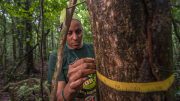


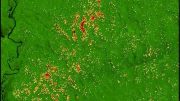
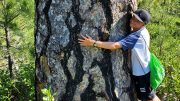


Who, with no financial plan, stable domain or country, will respond with any real effect or in time. Look at Covid-19, it was an immediate problem. Yet the industry that relies on our consumerist attitude to our economic pattern in the use of our time and resources to thrive still fights against changes that were/are required for this obvious issue. Just for a few months, we regard this as a crisis. What kind of mega crisis have we ever been able to comprehend let alone react to in a reasoned way? We are locked into our rich-bitch economy to fuel every project. Our highest organizational systems are political and science seems to play no lead role. A few groups have longterm goals to start mining the Moon and Mars and keep measuring change, and they are using our funds to launch them. If they are a slim example of success, then we need their process to be magnified 50,000 times. Who exactly is going to take the first big step and turn our world mining economy into a biological revival. And which country or financial domain will separate itself from our ‘Trump world’ and become truly scientific in its approach? Count me in if you have an answer.
These kinds of studies have been done for decades. Even if all of the conditions and speculations are true there is nothing REALISTIC that can be done about them. Lowering carbon emissions, capturing it straight out of the atmosphere and storing many billions of tons of it? None of that is possible by 2050, if ever. Time to begin to innovate new infrastructure adaptations and not try to mitigate the impossible.